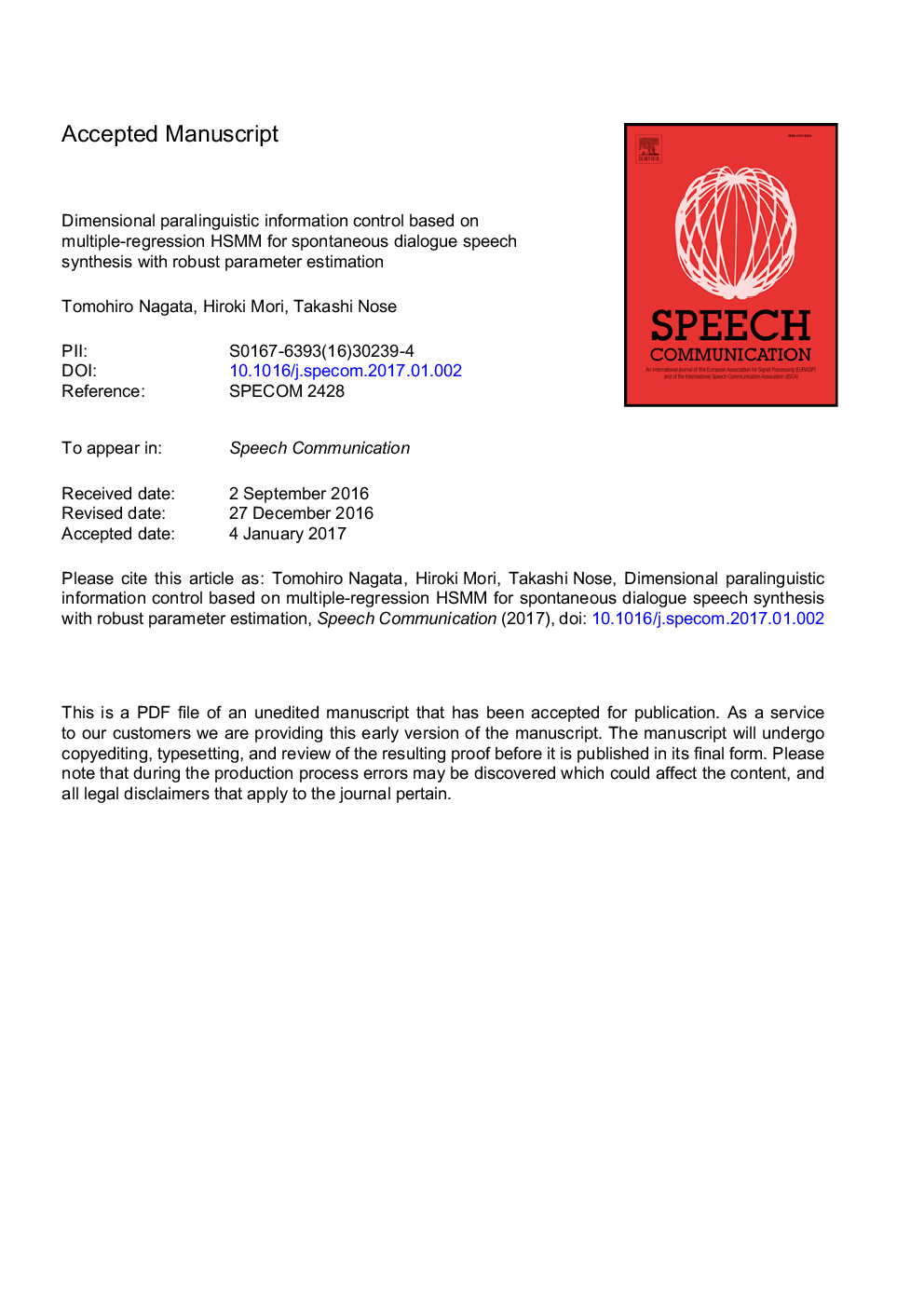| Article ID | Journal | Published Year | Pages | File Type |
|---|---|---|---|---|
| 4977852 | Speech Communication | 2017 | 45 Pages |
Abstract
This paper describes spontaneous dialogue speech synthesis based on the multiple regression hidden semi-Markov model (MRHSMM), which enables users to specify paralinguistic information of synthesized speech with a dimensional representation. Paralinguistic aspects of synthesized speech are controlled by multiple regression models whose explanatory variables are abstract dimensions such as pleasant-unpleasant and aroused-sleepy. However, in the training phase of the MRHSMM, estimated regression coefficients may have unreasonably large values, which cause fragility in the parameter generation with respect to paralinguistic information given to the synthesizer. For robust estimation of the regression matrices of the MRHSMM with unbalanced spontaneous dialogue speech samples, the re-estimation formulae were derived in the framework of the maximum a posteriori (MAP) estimation. By examining the synthesized speech, it was confirmed that the acoustic features of synthesized speech are well controlled by the dimensions, especially by the dimension of aroused-sleepy. The result of a perceptual experiment confirmed that the naturalness of synthesized speech was improved by applying the MAP estimation for regression matrices. In addition, a relatively high correlation was observed between given and perceived paralinguistic information, which implies that the proposed method could successfully reflect intended paralinguistic messages on the synthesized speech.
Related Topics
Physical Sciences and Engineering
Computer Science
Signal Processing
Authors
Tomohiro Nagata, Hiroki Mori, Takashi Nose,
